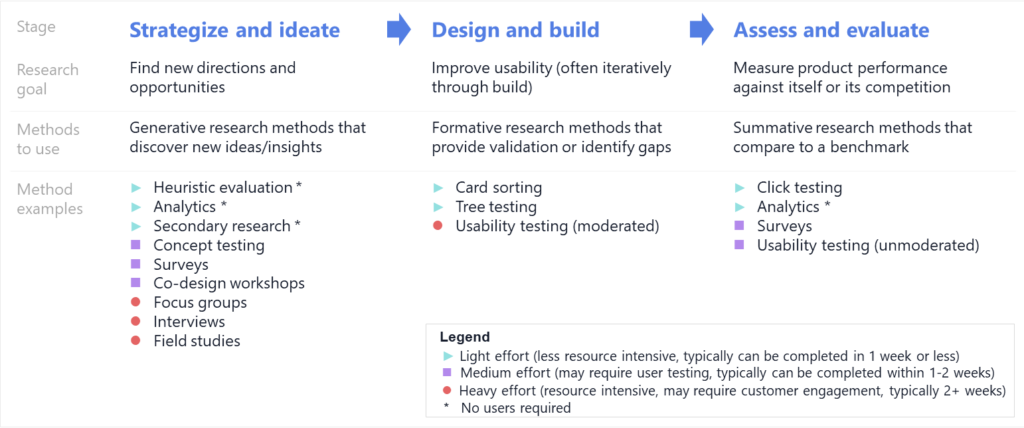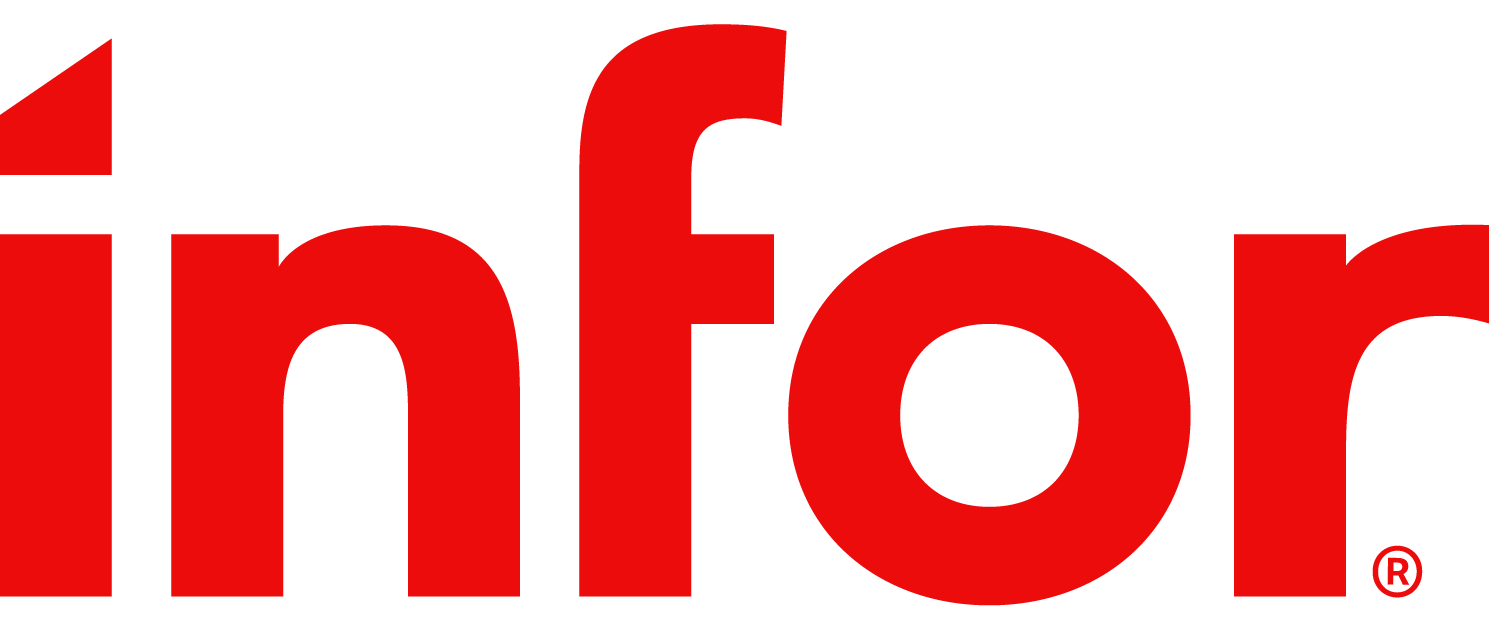UX Research Methodologies
Please note: This content reflects industry best practices. We’ve provided links to third-party resources where appropriate.
Before You Start: Understand Your User Personas
User personas are the backbone to understanding users and their needs and goals. Develop user personas at the beginning of the product design process and revisit them regularly to inform every UX decision that you make. They’ll provide essential information to guide your UX research, especially as you decide on who you want to recruit to participate in your research.
Learn how to create user personas with our guide.
Select a Research Methodology
In order to select the best research methodology, you should first outline your research goals and success criteria. You can create a UX research plan to help guide you. Choose the method that best fits your research goal. Here are some guidelines and resources.

UX Research Resources
| Methodology | Description | Examples of Use |
|---|---|---|
| Heuristic Evaluation | Analysts inspect the interface instead of using it, comparing the UI to a list of predefined design principles (commonly referred to as heuristics). They rate each criterion on the checklist, identifying where the product doesn’t follow those principles. | Identify usability issues Identify baseline usability issues that can quickly be resolved before more in-depth testing and feedback |
| Secondary Research (competitive intelligence, customer insights) | Gathering relevant research findings that are already internally available or from external sources published by reputable organizations. | Logical first step in any research process Explore the problem space and scope of prior projects Identify important questions and best practices in the field of study |
| Quantitative Research* (analytics, card sorting, tree testing, click testing) | Collecting UX metrics through quantitative research lets you compare different designs, determine the scale or priority of design problems, and benchmark the user experience. | Validate a design, such as information hierarchy, navigation, layout, or a specific design Prioritize what’s important by looking at past data/analytics |
| Survey* | Participants are asked questions to gather feedback or information about users and/or groups of users. Surveys are a convenient way to gather a large amount of both qualitative and quantitative data at the participants’ convenience. | Explore and define areas of investigation Supplement previous research methods and gather feedback about new iteration Gather a wide range of user information and/or attitudes, demographics, pain points, satisfaction, etc. |
| Usability Testing* (moderated or unmoderated) | Participants meet one-on-one with a researcher at a lab or remotely via video conferencing. They’re given a set of scenarios that lead to tasks and usage of specific interest within a product or service. An unmoderated option is also available. | Learn about user behaviors and preferences Test if a product is intuitive and easy to use Identify product gaps and pain points, as well as opportunities for improvement Supplement heuristic evaluations, surveys, and/or secondary research |
| Group Discussion* (focus group, co-design workshop) | A group of users discuss issues and concerns. Group discussions discover what users want from a product (not an assessment of interaction styles or design usability). | Discover what users want from a product before UI design and after implementation Supplement 1:1 interviews |
| Interview* | Meet one-on-one with users, SMEs, and other stakeholders to collect subjective feedback about their routines, needs, desires, and challenges. | Understand user goals before defining a clear concept Gather well-informed opinions from SMEs Supplement other research methods to gain deeper insights into user feedback |
| Field Study and Contextual Inquiry* | Field research is conducted in the user’s context and location to experience a day in their life. Field research gathers insights from observations and/or interviews while users interact with a product in their own environment. | Validate a user’s workflow under real-life conditions Supplement 1:1 interviews, heuristic evaluations, surveys, and other preliminary research methods |
| Concept Testing (Wireframing) | Evaluating an idea or prototype to determine if it meets the needs of the target audience through surveys, interviews, and/or group discussions. | Informs the direction to take before investing more resources Validates ideas using low-fidelity wireframes/prototypes |
*When research involves internal or external participants, consider first performing a stakeholder and participant analysis to ensure that you have the right people involved and are engaging with them using the proper channels.
This list prioritizes commonly used methodologies, but more are available. Learn more about when to use which UX research methods.
Resources
- UX Research Enablement
- UX Research Best Practices
- Building User Personas
- Engaging Stakeholders & Participants
- Infor Customer Collaboration Program
Learn more
- A Guide to Using UX Research Methods (Article)
- When to Use Which UX Research Methods (Article)
- Triangulation: Using Multiple UX Methods (Article)
- Personas vs. Jobs-to-Be-Done (Article)
- Journey Mapping 101 (Article)
- User Stories (Article)
Questions or feedback? Check out our Frequently Asked Questions (FAQ) or contact the Contact the Infor Design UX Insights team at uxinsights@infor.com.

